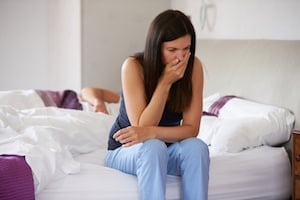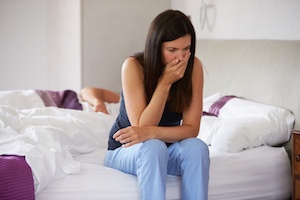
In a recent issue of Fertility and Sterility, Dr. David Meldrum from Reproductive Partners  Medical Group, Redondo Beach, California discussed the different facets of preventing ovarian hyperstimulation syndrome (OHSS). I have used this excellent article as the basis for this blog.
Medical Group, Redondo Beach, California discussed the different facets of preventing ovarian hyperstimulation syndrome (OHSS). I have used this excellent article as the basis for this blog.
OHSS is a dreaded complication associated with the use of fertility drugs (gonadotropins). In severe OHSS, the ovaries are enlarged, and there is accumulation of fluid in the abdomen and chest which can lead to kidney failure, electrolyte imbalance and formation of blood clots and-- very rarely-- death. The associated symptoms include nausea, vomiting, abdominal distension, and shortness of breath. Vascular endothelial growth factor (VEGF), which is secreted by the (granulosa) cells surrounding the egg, is believed to be the cause of OHSS.
Here are the top 10 steps we take to prevent OHSS
Identify patients at risk by an accurate antral follicle count and/or measurement of anti-mullerian hormone (AMH) levels. Patients with “polycystic appearing” ovaries (> 12 antral follicles per ovary) and those with an AMH level > 3.5 ng/mL are at higher risk for OHSS.
Use a lower starting dose of fertility drugs (gonadotropins) in patients at high-risk for OHSS. An initial dose of 150 iu may be sufficient. By limiting the dose, fewer small follicles, which are the driving force of OHSS, are launched. In patients with a robust response, the dose of medications can be tapered down.
Decreasing the trigger dose of hCG. hCG is the prime stimulator of VEGF. Instead of the standard dose of 10,000 units, one may lower the dose to 5,000 or even 3,300. This may reduce the number of mature eggs retrieved, but will also reduce the incidence of OHSS.
Coasting. In patients with a robust response (high estrogen levels with the follicles still being small (14 mm)), it may be possible to stop the fertility drugs for 2 – 3 days till the estrogen levels drop to a more acceptable level (generally < 3000 pg/mL) when the hCG trigger can be given. In the meanwhile, the larger follicles will continue to grow and the smaller follicles (which contribute to OHSS) do not.
Antagonist coast. In patients who are down regulated with Lupron, one can stop the Lupron and give a GnRH antagonist (Ganirelix, Cetrotide) for a couple of days while continuing the fertility drugs at a low dose (75 units hMG daily s.c.). This results in a prompt drop in the estrogen levels (probably due to direct action of the GnRH antagonist on the granulosa cells) and VEGF production.
Agonist trigger. In patients using a protocol with a GnRH antagonist, it is possible to substitute the hCG trigger with an “agonist trigger”. The use of 40 units of Lupron has been suggested as being adequate. The details of this approach will be discussed in a subsequent blog. The “agonist trigger” can be combined with the freezing of all the eggs. It can also be combined with a low-dose hCG trigger (1,000 – 1,500 units) given at the same time or just after egg retrieval.
Use of dopamine agonists. Cabergoline is a drug that has been used for treatment of elevated prolactin levels for many years. It has an indirect action of acting against the VEGF receptor and preventing OHSS. Cabergoline (0.5 mg orally once daily) is generally started on day of hCG and continued for 8 – 21 days.
Freezing all the eggs or embryos. Since pregnancy will increase the severity of OHSS, it is often prudent to postpone embryo transfer to a subsequent cycle in patients that are at high risk for OHSS.
Early tapping of the ascitic fluid. This is usually done via the vaginal route under ultrasound guidance. This reduces the load of VEGF in the circulation and shows immediate improvement in the patient’s symptoms. Patients (especially the ones that are pregnant) may require several taps prior to resolution of the OHSS.
Use of metformin. Metformin is a drug that is used for treating Type 2 diabetes and works by reducing insulin levels. Insulin stimulates VEGF, so the use of metformin may reduce the incidence of OHSS. For the same reason, patients should be told to avoid excessive sweets and intravenous fluids at time of egg retrieval should not contain dextrose.
Other less studied approaches include administration of a bolus of follicle stimulating hormone (FSH) at the time of hCG, and the use of low dose aspirin.
To work with a qualified, board-certified fertility specialist, make an appointment at one of InVia's four Chicago area fertility clinics.

Entire Website © 2003 - 2020
Karande and Associates d/b/a InVia
Fertility Specialists
